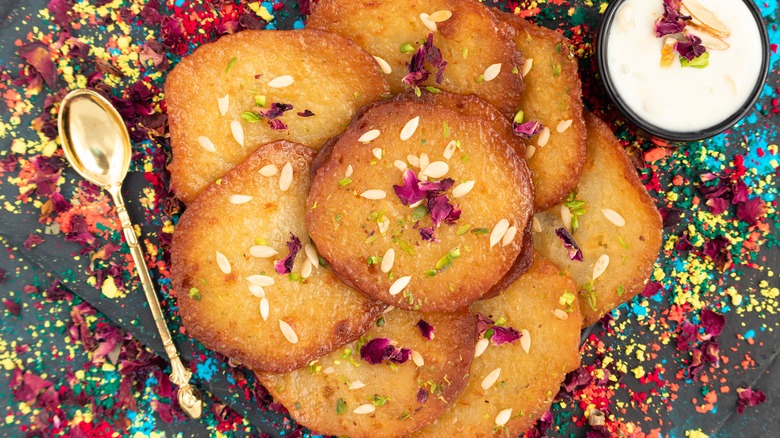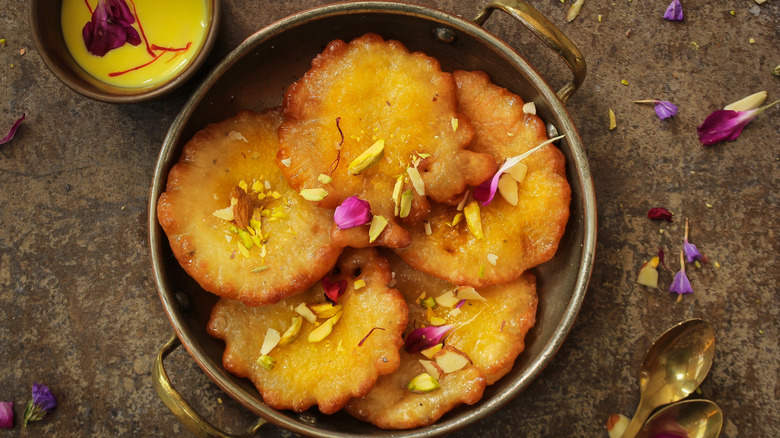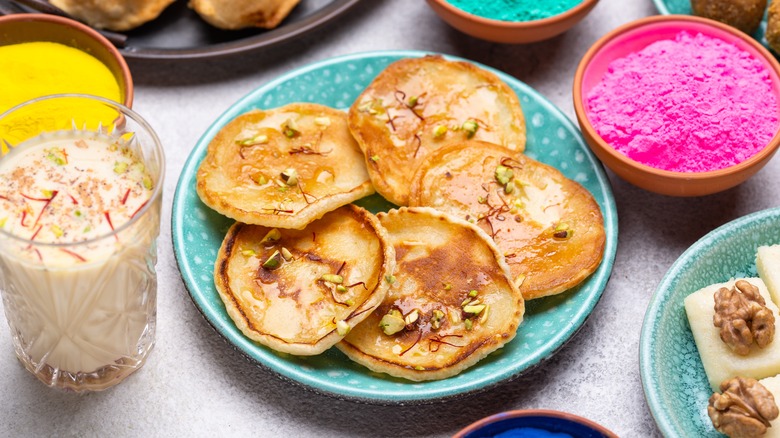Celebrate Holi With One Of The World's Oldest Desserts
Holi, known as the festival of colors, is an Indian holiday celebrated in part to mark the end of winter and the beginning of spring. To celebrate, people gather at communal or private and smear one another with colored powders called gulal.
Holi always falls on a full moon in the spring. This year, it is on March 25, when the streets of India will come alive with vibrant colors, music, and of course, festive food. There are many traditional dishes served on Holi, including the popular gujiya, a sweet pastry stuffed with nuts, sugar, coconut, and more. But there is one dessert that takes the cake.
Food historians have determined that malpua, a popular Holi dish, is one of the oldest (and yummiest, if one may add) desserts in the world. The first mentions of the dish appear in the ancient Rig Veda texts nearly 5,000 years ago. The simple dessert lives on to this day, making its grand appearance on Holi each year.
What is a malpua?
Malpua, in its essence, is a fried pancake with crisp edges and a pillowy soft interior, which is soaked in a sugar syrup called chashni. The dough is traditionally made with wheat flour, sugar or jaggery, cardamom, and milk. Once fried, it is topped with saffron, and an assortment of nuts like pistachios, cashews, and almonds. In its most luxurious presentation, it is topped with rabdi (also called rabri), a dessert made by condensing milk, sugar, cardamom powder, saffron powder, rose water, and nuts.
The malpua is served piping hot and the rabdi is always cold. This combination of hot and cold, in all its sweet decadence, makes for a sumptuous dessert.
Every state in India has different iterations of the malpua. Some recipes for the dough may call for semolina, while others may add shredded coconut. Confectionary makers in India make large portions of malpua for Holi morning. Boxes of sweets, called mithai, are traditionally given to neighbors, friends, and family during the holiday celebrations.
What does it taste like?
Malpua has a super soft interior that melts in your mouth when it is soaked in sugar syrup. You can taste the ghee it is fried in, and the subtle notes of saffron, cardamom, and blanched nuts. When paired with rabdi, the dish gains creamy, dairy notes, adding a silkier texture to the bite. You dig in with a spoon, getting a bite of both the malpua and rabdi. Think of it like a cold scoop of vanilla ice cream on a hot piece of pie. Mmm. It's the same principle. Now, wash that malpua and rabdi down with hot masala chai, and you've got yourself the most satisfying dessert. If you're feeling boozy, try it with a spiced chai old fashioned.
Holi festivals are celebrated all around the U.S. Indian bakeries and restaurants sell malpua throughout the country, so it is relatively easy to source if you plan to try it this year. There are few better ways to mark Holi than to indulge in a decadent dessert that happens to be one of the oldest recipes in history.


